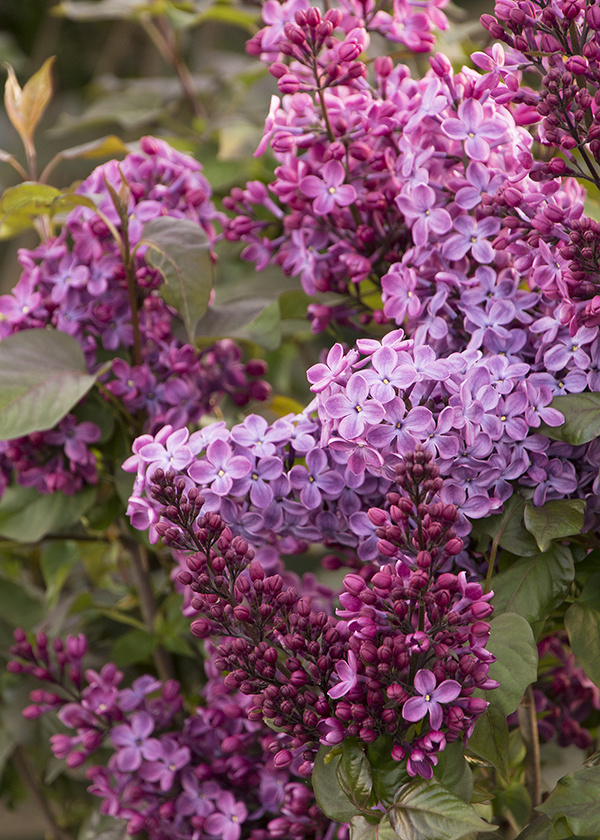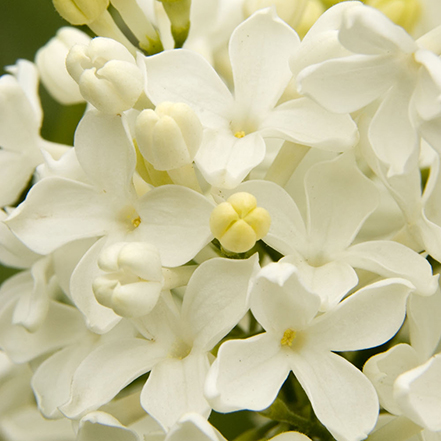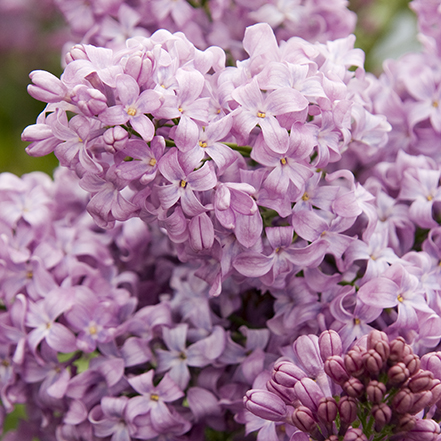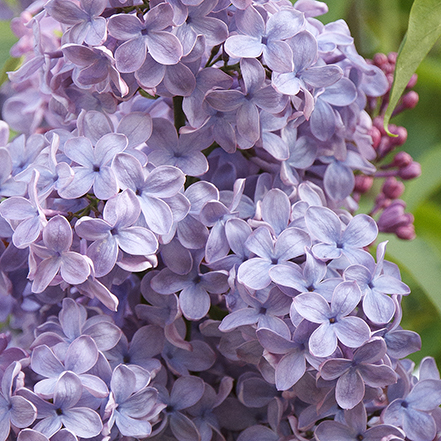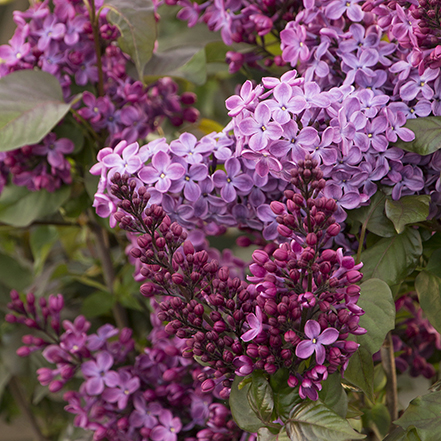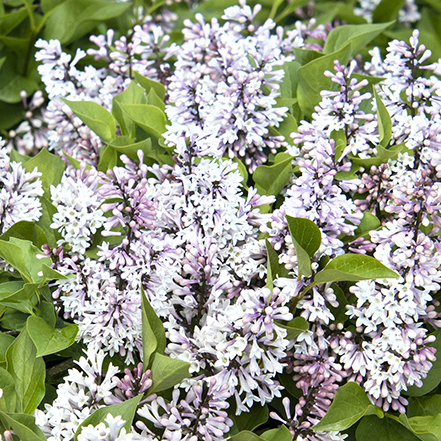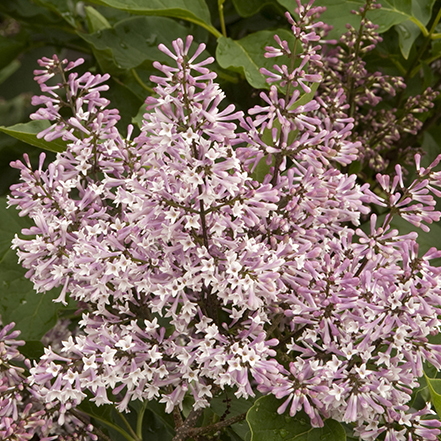In mild-winter climates, you can’t pop just any lilac (Syringa vulgaris) into the ground and be treated to a bounty of blooms come spring. Most lilacs need a long period of winter chill for buds to mature and bloom the following spring. You’ll need to buy low-chill varieties. The good news is that cultivars have been bred for warmer zones (generally to zone 8). While lilacs aren’t fussy, they require extra care in warmer zones. Depending on your climate and the particular variety, expect blooms from March into May. We asked Monrovia Craftsman Lydia Gompper to recommend the best varieties for mild-climates. Here are her suggestions and care advice. (See her ideas about how to landscape with these romantic, wonderful flowering shrubs.)
Six Favorite Low-Chill Lilacs
Angel White
Lilac
Spectacular pure-white flowers bloom in mid-May. Up to 12' tall, 10' wide.
Lavender Lady
Lilac
Ideal for warm winter areas, with perfumed lavender flowers that bloom in mid-May. Up to 12' tall and 6' wide.
Blue Skies®
Lilac
A favorite for zones with mild winters, with sweetly-scented, lavender-blue flowers in mid-May. Up to 10' wide and 6' tall.
Old Glory
Lilac
Fragrant, bluish-purple flowers in more humid areas. Up to 11' tall and wide.
Little Darling®
Lilac
A compact lilac that blooms twice a year with large clusters of fragrant flowers. Up to 4' tall and wide.
Miss Kim
Korean Lilac
Clusters of late-blooming lavender-blue flowers bloom on an upright and more compact habit. Up to 8' tall and wide.
Tips for Keeping Your Lilac Happy
- Full sun; at least 6 hours per day.
- Avoid over-crowding which can encourage powdery mildew.
- Avoid planting near lawns; year-round watering can prohibit dormancy.
- Until established, water regularly to keep the soil moist but not soggy.
- In warmest zones, after third season of growth, hold off watering starting in late September. This will induce winter dormancy; begin watering late February.
- Fertilize in late winter with an organic balanced 10-10-10 food.
- Prune right after bloom (and no later than June).
